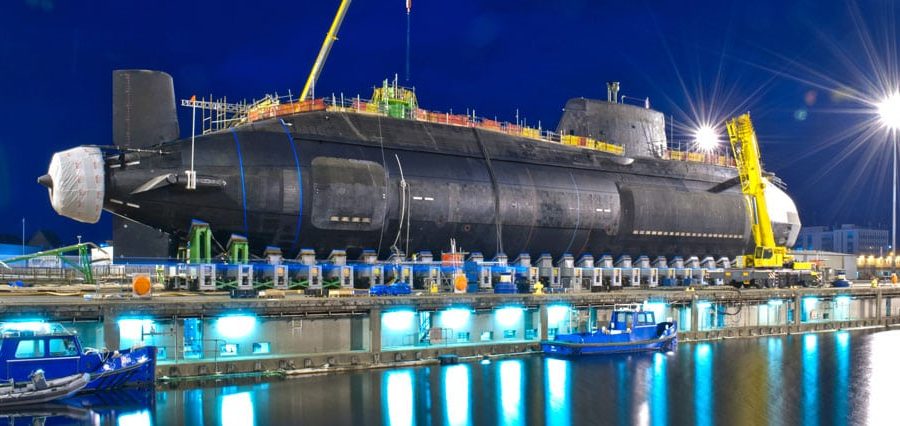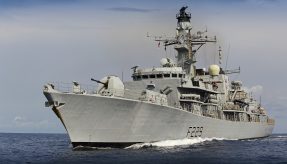
Having proved itself to be a valuable tool to effectively manage and minimise the risks of any project, Integrated Logistic Support (ILS) is now mandatory for all UK defence contracts, whether it’s delivering the next aircraft carrier, armoured fighting vehicle, or fast jet.
Such is its success, the private sector is now beginning to follow suit. Writing for Defence Online, Trevor Hirst, Operations Director at ILS consultancy Quorum, looks at the lessons that industries such as oil and gas, rail and healthcare could learn from the defence sector’s lead on ILS.
There is a vast and complex operating structure in place within the Armed Forces, with £8.7bn spent on equipment and infrastructure alone in 2016/17. Employing approximately 11,500 civil servants and military personnel, the MoD’s Defence Equipment and Support arm is responsible for the procurement of everything from ships and submarines to vehicles and weapons.
A strict operating structure for procurement is relied on to ensure consistent and effective project management from the moment a contract is signed until equipment becomes obsolete. This risk-management focus isn’t just advantageous, it’s project critical. And ILS acts as the foundation underpinning the success of every project undertaken.
When implemented well, ILS can reduce risks associated with cost and timescales, as well as improving quality, efficiency and capability. As well as identifying the risks themselves, the process should identify solutions to mitigate those risks for the end user.
ILS was first adopted by the US in the 1950s before being trialled in the UK, and by 1993 had become mandatory for all MoD contracts worth in excess of £1m. This was expanded to include all contracts in 2010, and it is now used for everything from software projects, collaborative projects, and major upgrades, to determining Through Lifecycle Costs.
Of course, it has to be done properly and with accuracy to be effective – and strategic insight is essential to ensure consistency across all activity and with all contractors. It is only when this strategic insight and consistency is implemented that ILS can be truly effective in terms of budgeting, safety, delivery and reputation.
There are many aspects of ILS which need to be implemented correctly, including finance analysis, technical documentation, maintenance management, and the training of end users. Considerations for each aspect include determination of an optimum solution, planning support requirements, and identifying major cost drivers and risks.
Despite its complexities and its origins as a military tool, its proven effectiveness means ILS has attracted the attention of many private sector companies, who are eager to manage costs, ensure efficient supply chains, reduce maintenance requirements and prevent delays.
ILS has already been adopted to great advantage by a number of private sector companies within certain industries. These include healthcare and pharmaceutical – where efficient production, sourcing and delivery is critical; renewable energy – where access limitations can see maintenance costs spiral, and potential system failures can cause huge financial losses; and rail – where there are multiple inter-connected aspects and fragmented supply chains to consider.
One organisation where ILS has already been implemented to great effect is Hitachi Rail Europe, where the process was used to establish spares requirements for two Hitachi HS1 Class 395 Sub-Systems. This involved the analysis of historic data and calculating the probability of a certain number of failures over a length of time, using Poisson Distribution Theory; each component was then allocated a theoretical and actual failure rate.
A run-down of spares holding was established per unit and per fleet, and this allowed for an uplift in provision where the failure rate was identified as being higher. By re-evaluating their spares holding, both maintenance and down time could be avoided and unnecessary costs could be reduced. As the defence sector has already trailblazed the widespread use of ILS, the private sector has the advantage of a wealth of examples to draw from when looking to implement, extend or strengthen its own use of these systems. Past mistakes can serve as lessons, and successes can act as targets for replication.
But, even with all of the MoD case studies available, ILS is such a complex process that many are turning to expert third-party companies to mitigate the risks, which include but aren’t limited to:
· Improper understanding of equipment failure rates, leading to inadequate spares holding, with associated increased downtime and lack of productivity.
· Quality, costs and timescales can be impacted by inaccurate calculations of the necessary manpower to deliver and maintain the project, while the right training must be identified and carried out to ensure maximum efficiency.
· Equipment can become dangerous or unfit for purpose if poorly managed. Key considerations are the capability, whether equipment is supportable throughout its lifetime, and its optimising costs.
· Inconsistent and inaccurate documentation can pose huge risks to safety and cause errors and inefficiencies.
Yet if done well, ILS has been consistently shown to mitigate risk, and is arguably now absolutely critical to the success of project management within the defence sector, with a positive impact on equipment design, manufacturing, delivery, training, safety, maintenance and support.
As with any complicated processes, there are poor implementation examples, but there are also countless excellent examples and experiences to draw upon. Where other industries have been slower to embed truly effective systems management processes, there is now scope for them to deploy ILS to meet project milestones, deadlines and budget constraints, and deliver excellence at every stage of the activity. Defence may be the first sector where ILS has been introduced across the board, but it certainly shouldn’t be the last.
More information about ILS, its use within the defence sector, and the potential for it to be rolled out across the private sector is available within the ‘Should the Private Sector be Influenced by the Military?’ white paper which can be requested by emailing info@qlsl.com
If you would like to join our community and read more articles like this then please click here.







